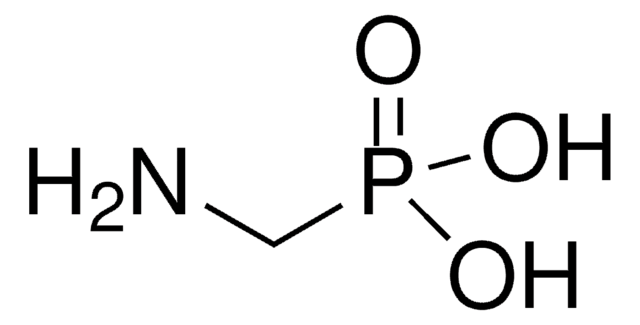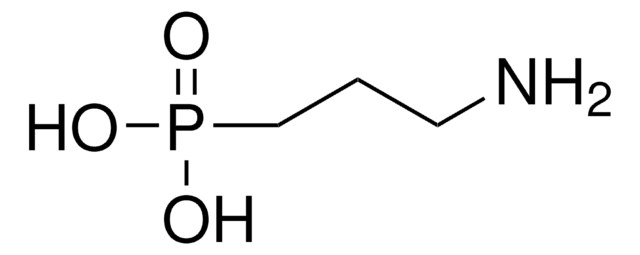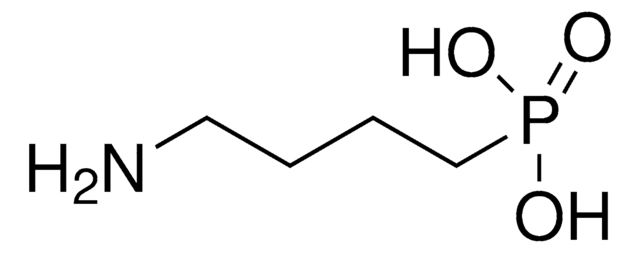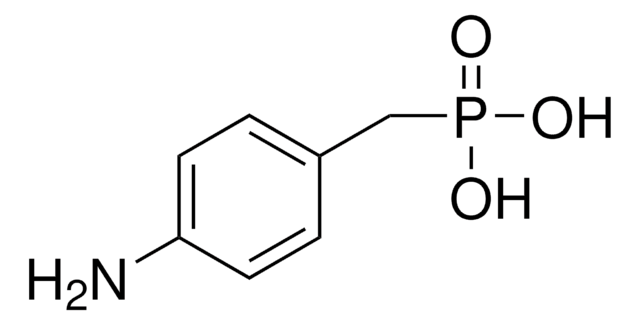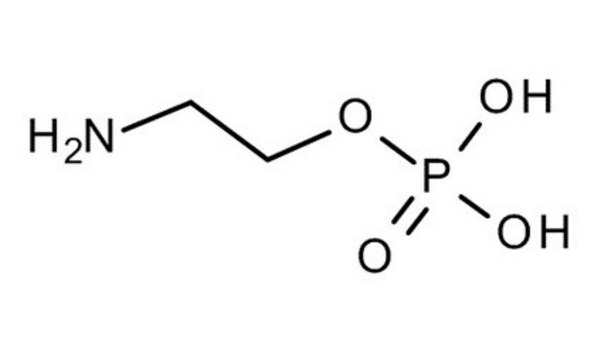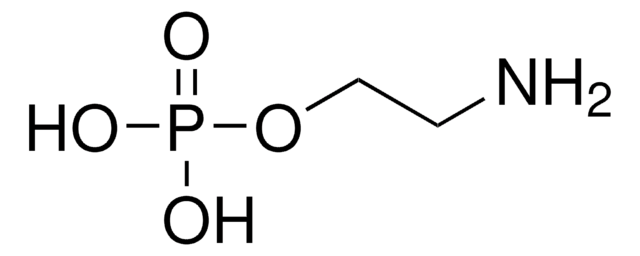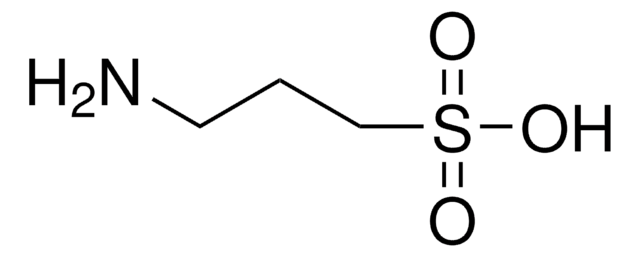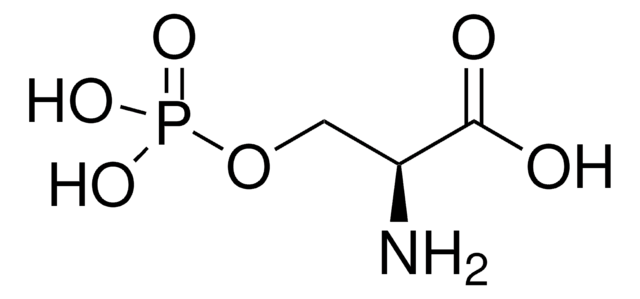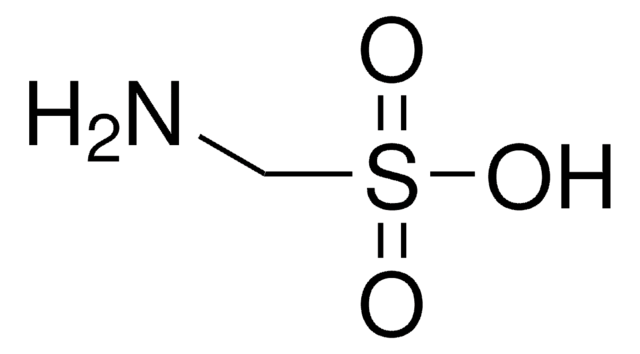268674
2-Aminoethylphosphonic acid
99%
Synonym(s):
2-AEP
Sign Into View Organizational & Contract Pricing
All Photos(3)
About This Item
Linear Formula:
H2NCH2CH2P(O)(OH)2
CAS Number:
Molecular Weight:
125.06
EC Number:
MDL number:
UNSPSC Code:
12352100
PubChem Substance ID:
NACRES:
NA.22
Recommended Products
Assay
99%
form
solid
mp
296 °C (dec.) (lit.)
solubility
water: soluble 50 mg/mL, clear, colorless
functional group
amine
SMILES string
NCCP(O)(O)=O
InChI
1S/C2H8NO3P/c3-1-2-7(4,5)6/h1-3H2,(H2,4,5,6)
InChI key
QQVDJLLNRSOCEL-UHFFFAOYSA-N
Looking for similar products? Visit Product Comparison Guide
General description
The surface of gold nanoparticles (Au NPs) were functionalized with 2-aminoethylphosphonic acid that exhibited calcium affinity which enabled targeted delivery of Au NPs to calcified tissue.
Application
2-Aminoethylphosphonic acid was used as a growth medium for the marine bacterium Roseovarius nubinhibens ISM.
Signal Word
Warning
Hazard Statements
Precautionary Statements
Hazard Classifications
Eye Irrit. 2 - Skin Irrit. 2
Storage Class Code
11 - Combustible Solids
WGK
WGK 3
Flash Point(F)
Not applicable
Flash Point(C)
Not applicable
Personal Protective Equipment
dust mask type N95 (US), Eyeshields, Gloves
Choose from one of the most recent versions:
Already Own This Product?
Find documentation for the products that you have recently purchased in the Document Library.
Mitali Sarkar et al.
The Journal of biological chemistry, 278(25), 22703-22708 (2003-04-04)
Phosphoenolpyruvate (PEP) mutase catalyzes the conversion of phosphoenolpyruvate to phosphonopyruvate, the initial step in the formation of many naturally occurring phosphonate compounds. The phosphonate compound 2-aminoethylphosphonate is present as a component of complex carbohydrates on the surface membrane of many
Natalia V Zhukova
Lipids, 42(12), 1169-1175 (2007-10-26)
Two nudibranch mollusks, Chromodoris sp. and Phyllidia coelestis, collected from tropical waters of the Northwestern Pacific, were analyzed for lipids. The aim of this study was to fill the gap in knowledge of lipid biochemistry of mollusks. Phospholipids (PL) were
Ryan D Ross et al.
Journal of biomedical materials research. Part A, 99(1), 58-66 (2011-07-28)
Gold nanoparticles (Au NPs) have been investigated for a number of biomedical applications, including drug and gene delivery vehicles, thermal ablation therapy, diagnostic sensors, and imaging contrast agents. Surface functionalization with molecular groups exhibiting calcium affinity can enable targeted delivery
Fabienne Le Grand et al.
Comparative biochemistry and physiology. Part A, Molecular & integrative physiology, 159(4), 383-391 (2011-04-30)
The detailed sterol (free sterol proportions and compositions) and phospholipid (PL) compositions (relative proportions of PL classes and subclasses and their respective fatty acid (FA) compositions) of hemocyte membranes were investigated in two bivalve mollusks: the Pacific oyster Crassostrea gigas
Svetlana A Borisova et al.
The Journal of biological chemistry, 286(25), 22283-22290 (2011-05-06)
A variety of microorganisms have the ability to use phosphonic acids as sole sources of phosphorus. Here, a novel pathway for degradation of 2-aminoethylphosphonate in the bacterium Sinorhizobium meliloti 1021 is proposed based on the analysis of the genome sequence.
Our team of scientists has experience in all areas of research including Life Science, Material Science, Chemical Synthesis, Chromatography, Analytical and many others.
Contact Technical Service